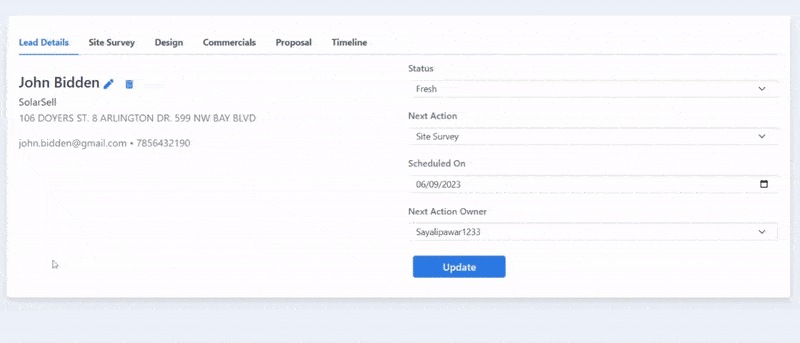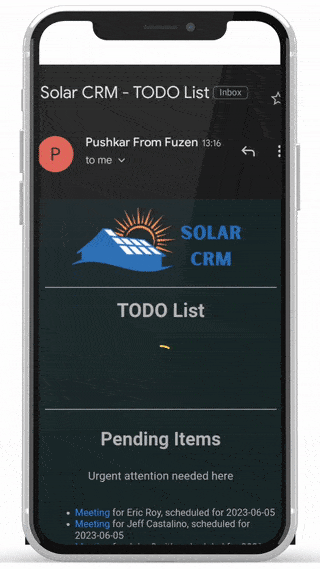Site survey is an important part in the rooftop solar sales process. Before you can propose a solar PV solution to someone, you first inspect the site for installation.
Accordingly, you can determine – how much shadow free space exists on the site, how much load can be handled by the roof, will there be sufficient clearance for maintenance in future etc. You can create a technical and commercial proposal only when all of these questions have been answered.
Since site surveys are so important in the solar sales process, it is a good idea to standardize the site survey process for your sales team. A site survey form for solar projects can help in a big way.
A well structured solar site survey form sets up clear objectives for the site survey, standardizes the data gathering process and enables smooth communication with rest of the project team.
Important objectives of site survey
Typically the site survey would be done by your sales team, who visit the customers to get their requirements, electricity bills, documents, site measurements and photos. Site survey for a solar PV installation is typically done with the following objectives –
- Ensure that there are no obstacles on site for installation and maintenance of the solar PV panels, mounting structures and other related equipment plus cabling
- Measure the overall site area as well as the shadow free area
- Measure the dimensions of the roof, along with existing loads on the roof
- Get electricity bills from the customer to estimate their energy consumption
- Get photos of the site so that engineering team can clearly visualize the area and accordingly plan for the best arrangement of solar panels
Creating a solar site survey form
With those objectives, you should structure your site survey form in such a way that your sales team will be able to gather all of the required information by simply filling up the solar site survey form.
We can classify the information to be gathered in following categories:
Customer information
- Customer’s name / company name
- Contact details – address, email, phone number
Site information
- Latitude and longitude
- Roof height (or number of floors)
- Free space available on roof
- Required installation – roof / ground mounted
- Roof structure – RCC, metal sheet
- Roof type – plane / inclined (with tilt angle)
Electrical information
- Connection type – single phase / 3 phase
- Sanctioned electricity load (kVA)
- Connected load
- Installed capacity and voltage of transformers
- Low and medium voltage level values
- Electricity consumption load (min / average / maximum)
- Annual electricity consumption (kWh)
Additional documents to be attached
- Recent electricity bills from the customer
- Single line diagram of electricity distribution
- Simple sketch of the site
- Site photos taken from different angles for complete clarity
Here is a detailed solar site survey form template for reference. It covers of most of the required information.
Online solar site survey form
Now that we have covered the basic form structure for solar site surveys, how do you create and actually use this form?
The simplest way would be to use offline, paper based forms to collect the information. Then your sales team can physically submit the form in office or email a soft copy of it to the project team. It is the simplest way, but much inefficient.
First of all, it takes a longer time to get the information from site to office, resulting in longer time window to submit the final proposal. This longer time window may just allow your competitor to steal the order away from you.
Secondly if your site survey information is not going to a central database, it becomes very hard to trace it later on. Imagine if you need to refer to the measurements a couple of months later. You will need to dig through a few folders, emails and files to get to it.
Therefore, what you really need is a site survey app equipped with a mobile friendly form customized for solar EPC. Ideally this site survey app should also be directly connected to a central database and should enable users to quickly create site survey reports.

Solar CRM is connected to a mobile friendly site survey form. So site survey measurements, photos, updates sent by your sales team will be immediately updated in your solar CRM dashboard.
Using Google Forms for solar site survey
The simplest solution is to create a customized Google form for your solar site surveys and then distribute the form link to your sales team. The captured information then goes into a designated spreadsheet which serves as a central database for all your site survey measurements and files.
Our solar crm goes one step further and connects this Google form to your solar sales dashboard. It also sends a daily todo list email highlighting all the site surveys to be done and give you a simple link to upload site survey data.
So every time your sales team does a site survey, email alerts will be sent to project manager and engineering team with all the site survey measurements and files.
Even when you want to access this data later on, you can simply go to your solar sales tracking dashboard and access it from there with a single click.
Using site survey data for proposals
Another big advantage of using Google forms for site surveys is that all the site survey data and documents for each customer very well streamlined in your Google Drive. In Solar CRM, site survey measurements are stored in a Google spreadsheet and all the files, documents and photos are saved in Google Drive folders.
From there, this data can be easily used for automated sales proposal creation. Solar CRM does this by defining a proposal template in your Google Drive. Usually this template is in the form of an easily editable, customizable Google Document. Whenever you want to create a proposal, CRM will just pick up the site survey data from your Google Drive, plug it into the proposal template and you get a PDF quotation ready to be sent to the customers – in just a few seconds.



